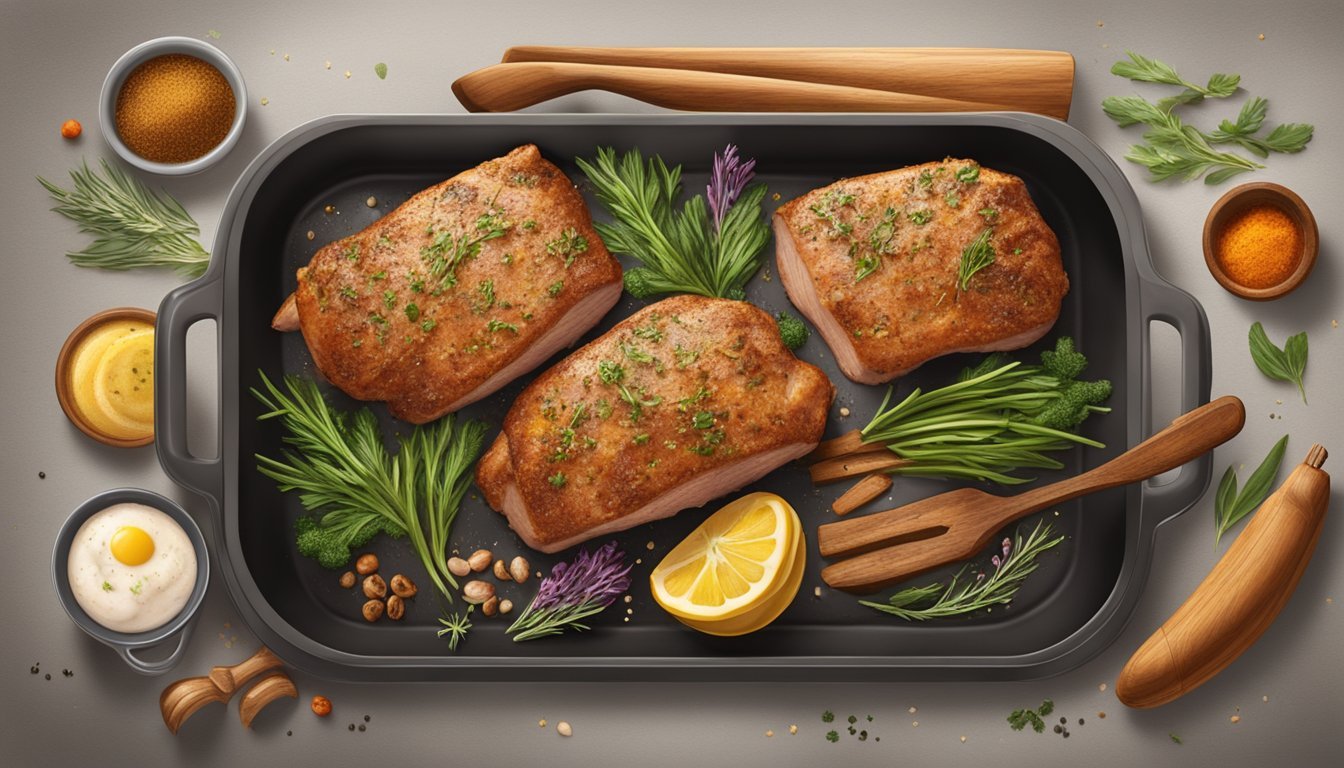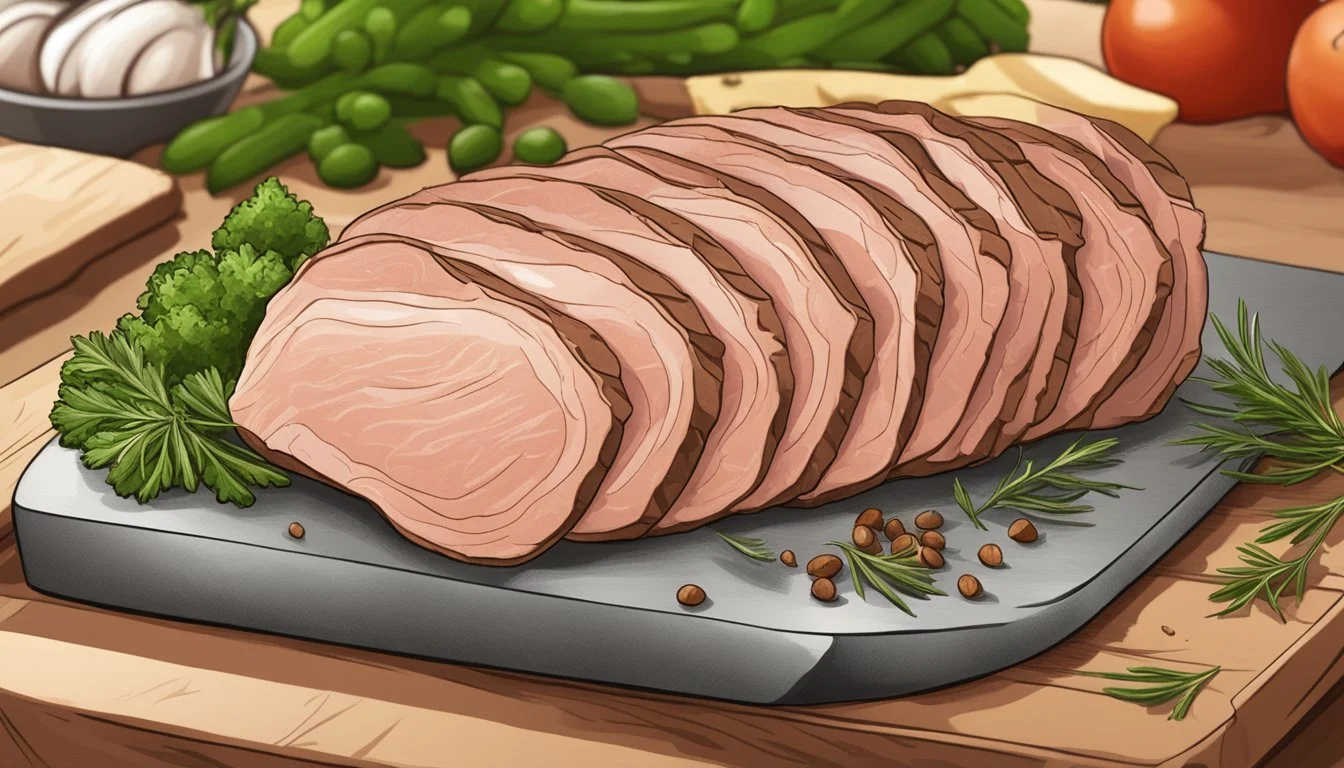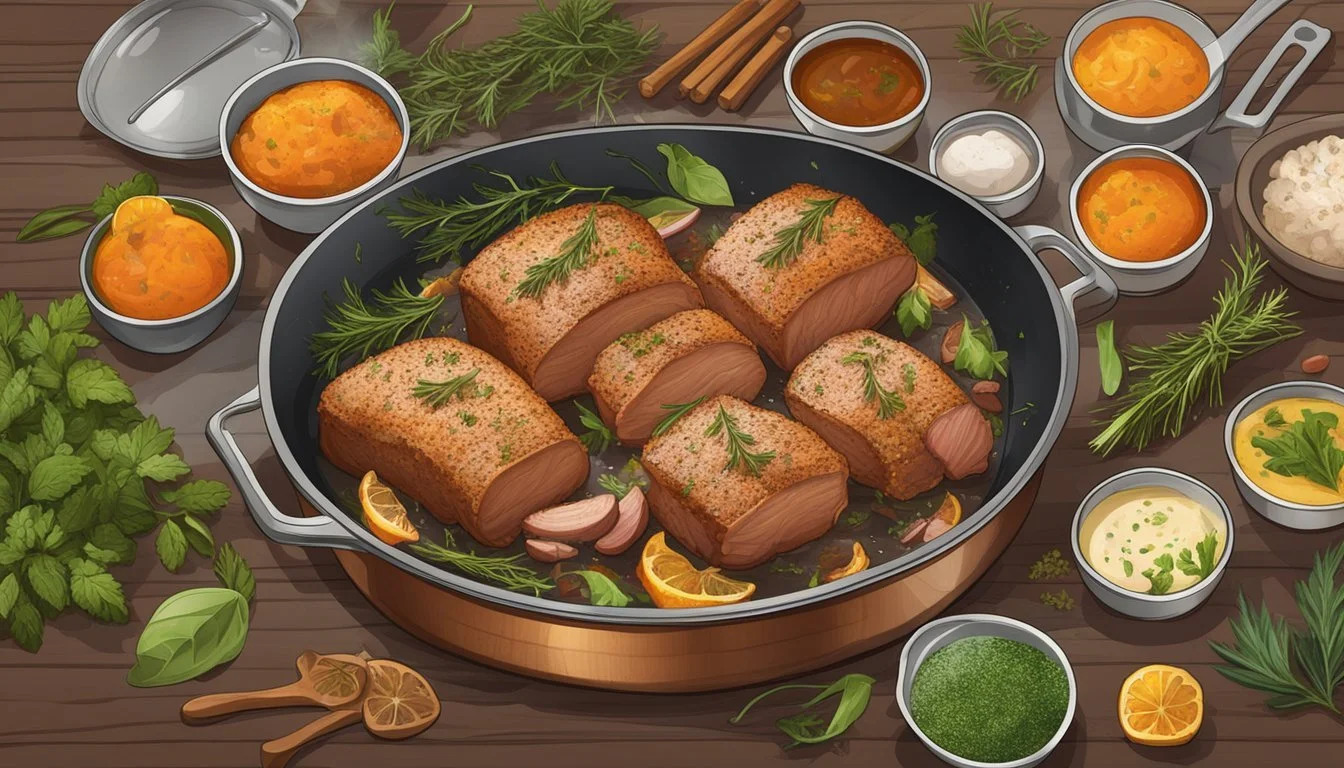How to Cook Pork Tenderloin in the Oven
A Guide to Juicy, Flavorful Results
Pork tenderloin is a lean, tender cut of meat that can be transformed into a delicious meal with proper preparation and cooking techniques. Roasting pork tenderloin in the oven is a simple yet effective method that yields juicy, flavorful results in a relatively short time.
The key to perfect oven-roasted pork tenderloin lies in maintaining a temperature of 375°F (190°C) and cooking the meat for approximately 20-25 minutes per pound. This ensures the pork reaches an internal temperature of 145°F (63°C), resulting in a safe and succulent dish. Many recipes recommend searing the tenderloin in a pan before transferring it to the oven, which helps seal in the juices and create a flavorful crust.
Seasoning plays a crucial role in enhancing the natural flavors of pork tenderloin. A simple dry rub of salt, pepper, garlic powder, and herbs like rosemary or thyme can elevate the taste profile. For added moisture and flavor, some cooks opt to marinate the tenderloin before roasting or create a pan sauce using the drippings after cooking.
Understanding Pork Tenderloin
Pork tenderloin is a lean, tender cut of meat prized for its versatility and quick cooking time. It offers excellent nutritional value and can be prepared in various ways for delicious results.
Comparing Pork Loin and Pork Tenderloin
Pork loin and pork tenderloin are distinct cuts of meat. Pork tenderloin is a long, thin muscle that runs along the spine. It's typically 1-2 inches in diameter and 10-12 inches long. Pork loin is wider and flatter, cut from the back of the pig.
Tenderloin is more tender due to less connective tissue. It cooks faster than pork loin and is best suited for high-heat methods like roasting or grilling. Pork loin is larger and requires longer cooking times.
Both cuts are lean, but tenderloin has slightly less fat content. The flavor profiles differ slightly, with tenderloin being milder in taste.
Preparation of Pork Tenderloin
Proper preparation is key to achieving the best results with pork tenderloin. First, remove the silver skin, a tough connective tissue that doesn't break down during cooking. Use a sharp knife to carefully trim it away.
Pat the tenderloin dry with paper towels before seasoning. This helps create a better crust when searing. Many chefs recommend a quick sear in a hot skillet before roasting to enhance flavor and texture.
Seasoning can be as simple as salt and pepper or more complex with herbs and spices. Marinades work well with this cut, but avoid over-marinating as it can make the meat mushy.
Nutritional Properties
Pork tenderloin is an excellent source of protein and essential nutrients. A 3-ounce serving contains about 22 grams of protein and only 3 grams of fat. It's rich in B vitamins, especially thiamin, niacin, and B6.
This cut is also a good source of minerals like phosphorus, selenium, and zinc. It contains all nine essential amino acids, making it a complete protein source.
Pork tenderloin is relatively low in calories, with about 120 calories per 3-ounce serving. Its leanness makes it a heart-healthy choice when prepared without added fats.
Ingredients and Substitutions
For a delicious oven-roasted pork tenderloin, you'll need a few key ingredients. The star of the dish is, of course, a pork tenderloin, typically weighing around 1 to 1.5 pounds.
To season the meat, gather salt, pepper, garlic powder, and paprika. These spices create a flavorful crust on the exterior of the tenderloin.
Olive oil helps the seasonings adhere to the meat and promotes browning. For those avoiding olive oil, vegetable or canola oil can be used as substitutes.
Some recipes call for a touch of sweetness with brown sugar. If you prefer a sugar-free option, try a small amount of honey or maple syrup instead.
For added depth, consider including onion powder or dried herbs like oregano and parsley. Fresh herbs can be used in place of dried for a brighter flavor.
A dry rub consisting of the aforementioned spices can be applied directly to the meat. Alternatively, create a simple marinade using oil, vinegar, and seasonings for extra flavor penetration.
To finish the dish, a pat of butter can be added for richness. For a dairy-free version, try using a plant-based butter alternative or omit it entirely.
Equipment Essentials
To perfectly roast pork tenderloin in the oven, a few key tools are necessary. An oven-safe skillet, preferably cast iron, is ideal for searing and roasting the meat in one pan.
A reliable meat thermometer is crucial for achieving the desired doneness. An instant-read digital thermometer offers quick and accurate temperature readings.
A sturdy roasting pan or baking sheet can be used if a cast iron skillet is unavailable. This provides ample space for the pork and any accompanying vegetables.
Tongs are useful for handling and turning the tenderloin during searing and transferring it to the oven. Sharp kitchen shears help trim any excess fat or silverskin.
A cutting board and sharp knife are needed for slicing the cooked tenderloin. Aluminum foil is handy for tenting the meat while it rests after cooking.
Lastly, oven mitts protect hands when handling hot pans. With these tools on hand, preparing a delicious oven-roasted pork tenderloin becomes a straightforward task.
Preparing Pork Tenderloin for Cooking
Start by trimming any excess fat or silverskin from the pork tenderloin. This ensures even cooking and improves texture.
Pat the meat dry with paper towels. Moisture on the surface can prevent proper browning.
Apply a thin coat of olive oil to the tenderloin. This helps seasonings adhere and promotes browning.
Season the pork generously. Use a pre-made dry rub or create your own with spices like garlic powder, onion powder, sage, salt, and paprika.
For added flavor, consider marinating the pork for 2-4 hours before cooking. A simple marinade can include olive oil, herbs, and citrus juice.
Some recipes call for searing the tenderloin before roasting. Heat oil in an oven-safe pan over medium-high heat and brown each side for 3-4 minutes.
If not searing, place the seasoned pork directly into a shallow baking dish. It's now oven-ready.
Allow the pork to sit at room temperature for 20-30 minutes before cooking. This promotes even cooking throughout.
Preheat the oven to 425°F (218°C) while the pork rests. A hot oven is key for achieving a nicely browned exterior.
Marinating and Seasoning
Marinating pork tenderloin enhances its flavor and juiciness. A simple marinade can be made with olive oil, soy sauce, garlic, and mustard. Place the pork in a resealable plastic bag, pour in the marinade, and refrigerate for at least 1 hour.
For those short on time, a dry rub is an excellent alternative. Mix sea salt, black pepper, garlic powder, and paprika in a bowl. Pat the tenderloin dry, coat it with olive oil, then rub the seasoning mix all over the meat.
Marinating times can vary:
30 minutes: Quick flavor boost
1-2 hours: Deeper flavor penetration
Up to 24 hours: Maximum flavor infusion
Pro tip: Reserve some marinade before adding the pork to brush on during cooking for extra flavor.
When seasoning, be generous but avoid oversalting. The meat should be evenly coated for consistent flavor throughout. Remember to discard any excess marinade that has been in contact with raw pork to prevent food safety issues.
Oven Cooking Techniques
Roasting pork tenderloin in the oven is a simple and effective method. Preheat the oven to 400°F (204°C) for optimal results.
Start by searing the tenderloin in an oven-safe skillet over medium-high heat. This creates a flavorful crust on the outside.
Transfer the skillet to the preheated oven. Roast the pork for 15-20 minutes, depending on its size.
Use a meat thermometer to check the internal temperature. The pork is done when it reaches 145°F (63°C).
For even cooking, consider these tips:
Turn the tenderloin halfway through roasting
Let it rest for 5-10 minutes after cooking
Use a marinade or dry rub for extra flavor
Baking is another option. Place the tenderloin in a baking dish and cook at 375°F (190°C) for about 25 minutes.
For a crispy exterior, try this technique:
Sear the pork on all sides
Roast at 425°F (218°C) for 10-15 minutes
Reduce heat to 375°F (190°C) and cook until done
Remember to always let the pork rest before slicing. This helps retain its juices and ensures a tender result.
Finalizing the Dish
Once the pork tenderloin reaches an internal temperature of 145°F (63°C), remove it from the oven. This ensures the meat is fully cooked while remaining juicy and tender.
Allow the pork to rest for 5-10 minutes before slicing. During this time, the internal temperature will continue to rise slightly, and the juices will redistribute throughout the meat.
Cover the tenderloin loosely with aluminum foil while it rests. This helps retain heat and moisture, resulting in a juicier final product.
After resting, slice the pork tenderloin into 1/4-inch thick medallions using a sharp knife. Arrange the slices on a serving platter for an attractive presentation.
Pour any accumulated juices from the baking dish over the sliced pork for added flavor. Garnish with fresh herbs like chopped parsley or thyme if desired.
Serve the pork tenderloin immediately while it's still warm. Pair it with your choice of sides such as roasted vegetables, mashed potatoes, or a crisp salad for a complete meal.
Serving Recommendations
Pork tenderloin pairs well with a variety of side dishes. Roasted vegetables like green beans or asparagus complement the meat's flavors nicely. Their crisp texture provides a pleasant contrast to the tender pork.
For a heartier meal, serve the tenderloin with mashed sweet potatoes. The natural sweetness of the potatoes balances the savory pork flavors. Rice also makes an excellent accompaniment, absorbing any juices from the meat.
Sliced pork tenderloin works well in sandwiches or tacos. Layer thin slices with fresh vegetables and condiments for a satisfying lunch option. Leftover tenderloin can be diced and incorporated into fried rice for a quick and tasty dinner.
A crisp salad provides a refreshing contrast to the rich pork. Consider a mix of fresh greens, sliced apples, and a light vinaigrette dressing. This combination offers a balance of flavors and textures.
When plating, slice the tenderloin into medallions and arrange them attractively. Garnish with fresh herbs for added visual appeal and flavor. Serve any pan juices or sauce on the side for diners to add as desired.
Storing and Reusing Leftovers
Proper storage of leftover pork tenderloin is crucial for maintaining its quality and safety. After cooking, allow the meat to cool to room temperature before refrigerating.
Store pork tenderloin in an airtight container or wrap it tightly in aluminum foil. Refrigerate within two hours of cooking. Properly stored leftovers can last 3-4 days in the refrigerator.
For longer storage, freeze pork tenderloin in freezer-safe bags or containers. It can be kept frozen for up to 3 months.
Reheating leftover pork tenderloin is simple. Slice the meat thinly and reheat in a skillet with a bit of oil or broth. Alternatively, reheat in the microwave, covered, in short intervals to prevent drying out.
Leftover pork tenderloin can be repurposed into various dishes:
Sandwiches or wraps
Stir-fries
Salads
Fried rice
Casseroles
A quick and easy option is to make a pork tenderloin casserole. Combine diced leftover pork with rice, vegetables, and cheese. Bake until heated through and the cheese is melted.
Another idea is to use leftover pork in spring rolls. Mix with finely chopped vegetables, wrap, and fry for a crispy treat.
Pairing Suggestions
Pork tenderloin pairs well with a variety of side dishes and beverages. White wine is an excellent choice to complement the meat's flavors. Consider a crisp Chardonnay or Sauvignon Blanc.
For starchy sides, mashed potatoes are a classic option. Their creamy texture contrasts nicely with the tenderloin's lean profile. Sweet potatoes offer a nutritious alternative with a touch of sweetness.
Vegetable pairings include roasted Brussels sprouts, steamed green beans, or a crisp salad. These provide freshness and balance to the meal.
For a complete baked pork tenderloin recipe, consider these accompaniments:
Herb-roasted baby potatoes
Sautéed spinach with garlic
Glazed carrots
Quinoa pilaf
A light fruit compote or apple sauce can add a subtle sweetness that enhances the pork's natural flavors.
Remember to adjust side dishes based on the seasoning of your pork tenderloin. Complementary flavors will create a harmonious and satisfying meal.






